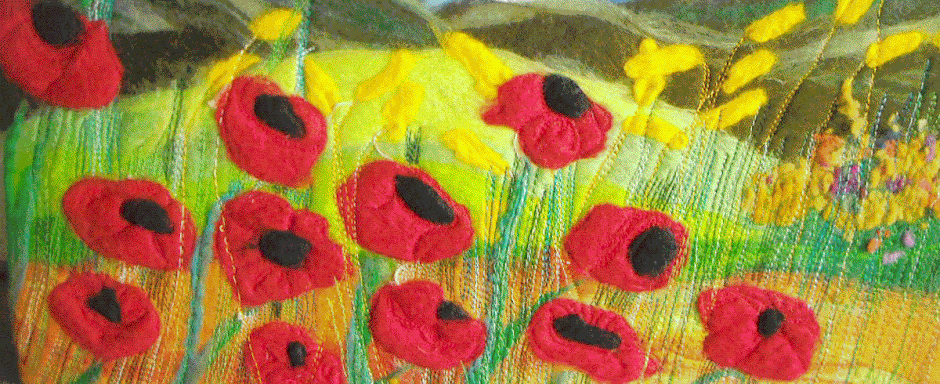Over the years my felt pictures have slowly developed and I have been adding more and more stitching to them. I wondered what would happen if I completely cvered one with stitching and this is what happened.
First I made a very simple felt picture. I wanted to be able to concentrate on the stitching and not a complicated design. This is the felt
 I continued by adding layers of straight stitch . I overlapped some of the colours to blend everything together. When there were just tiny bits of felt visible I stopped stitching. The end result was a more crisp and defined image and I preferred it to the original.
I continued by adding layers of straight stitch . I overlapped some of the colours to blend everything together. When there were just tiny bits of felt visible I stopped stitching. The end result was a more crisp and defined image and I preferred it to the original.
 As you can see as well as changing shape the stitching had cause rippling at the edges. After careful pressing on the back I got rid of the ripples but how should it be finished and presented? I scoured my reference books and the internet which all gave different advise. I looked at images of stitched pictures and saw that some had been edged with yarn. After rummaging through my stash I found some novelty yarn in black, grey and white which I thought would bring out the colours in the rock. It was very thin so I made a cord with it which thickens the yarn x 4. I trimmed the edges of the felt and stitched the cord on to it. It worked.
As you can see as well as changing shape the stitching had cause rippling at the edges. After careful pressing on the back I got rid of the ripples but how should it be finished and presented? I scoured my reference books and the internet which all gave different advise. I looked at images of stitched pictures and saw that some had been edged with yarn. After rummaging through my stash I found some novelty yarn in black, grey and white which I thought would bring out the colours in the rock. It was very thin so I made a cord with it which thickens the yarn x 4. I trimmed the edges of the felt and stitched the cord on to it. It worked.
First I made a very simple felt picture. I wanted to be able to concentrate on the stitching and not a complicated design. This is the felt
The drawbacks are it uses a LOT of thread, takes a lot of time and the stitching distorts the felt fabric. This picture started out in a landscape format and ended up as portrait.
I was going to put this in my textile sample book but my husband liked it so much he wanted it displayed so I mounted on to black card and put it in a box frame. I like the way it seems to 'float', It now lives in our lounge.
I will be exploring this further and hope to have some in my etsy shop soon.
